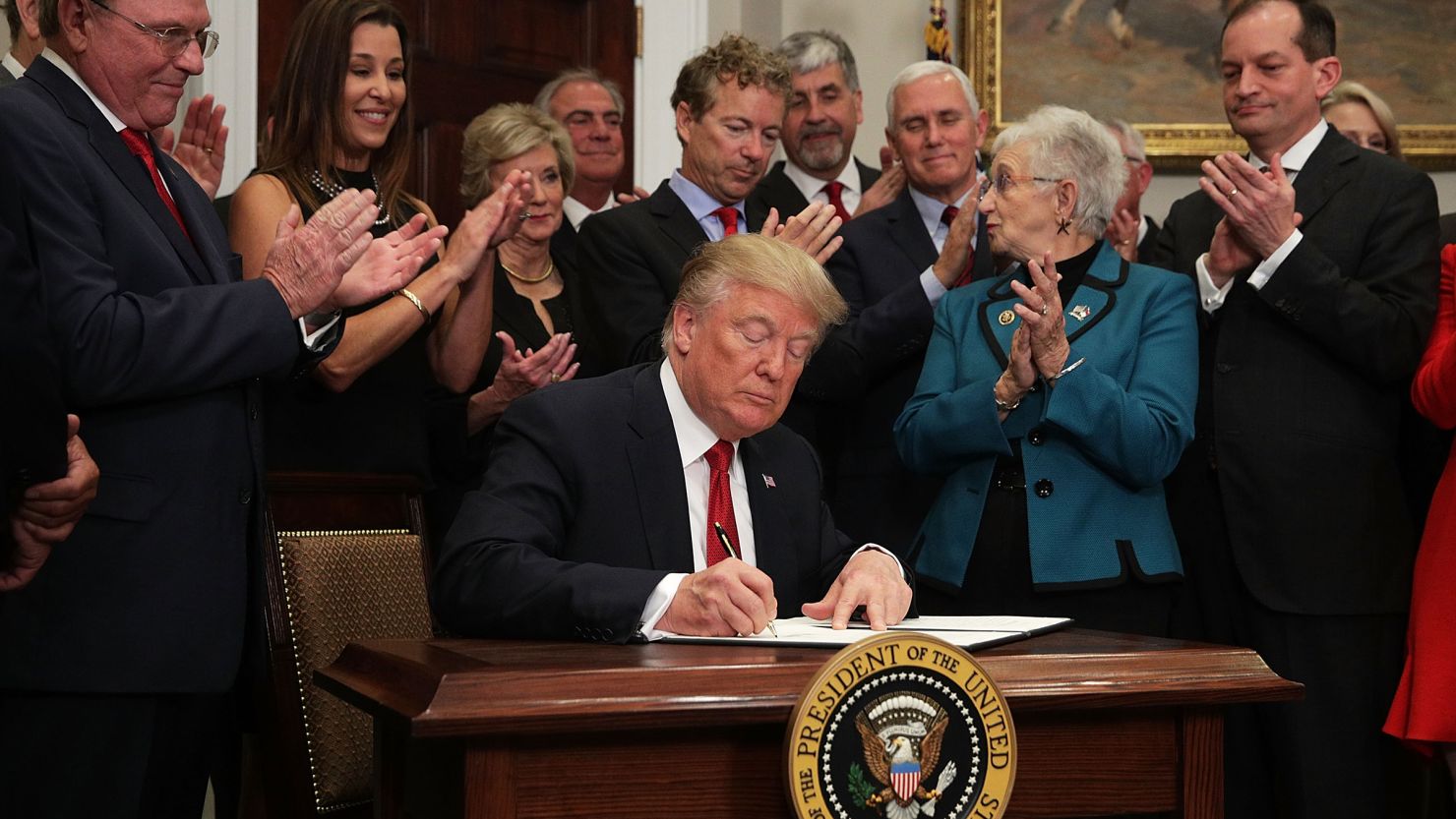Instead of terminating the Affordable Care Act, former President Donald Trump is now promising to make it “much better, stronger and far less expensive” if he wins the presidential election in November.
“I’m not running to terminate the ACA as crooked Joe Biden says all over the place,” Trump said in a video posted to Truth Social on Thursday, echoing a message he posted last month. “We’re going to make the ACA much better than it is right now and much less expensive for you.”
The future of Obamacare has once again become a main theme of the presidential campaign. President Joe Biden has jumped on Trump’s comments, saying the former president wants to rip away health care coverage from millions of Americans and touting his own actions to strengthen the landmark health reform law.
Trump had four years to replace — or at least remake — the Affordable Care Act, even though a Republican-led Congress failed to repeal it. But while his administration made quite a few changes, most amounted to tinkering around the edges and not striking at the core of the law.
Trump faced two major hurdles. His powers were limited both by Congress and by the increasing popularity of many Obamacare provisions, including those that protect people with preexisting conditions and let children stay on their parents’ plans until age 26.
“There’s only so much an administration can do,” said Edmund Haislmaier, senior research fellow at the Heritage Foundation’s Center for Health and Welfare Policy, who served on the Trump transition team after he was elected in 2016. “For big changes, you have to go through Congress.”
Still, Trump’s actions did have a range of impacts. Sign-ups fell from nearly 12.7 million for 2016 coverage to 11.4 million for 2020 policies, before rising to 12 million for 2021 coverage in the midst of the Covid-19 pandemic.
But the Obamacare exchanges also stabilized during his term: Insurers returned to the market after fleeing in the early years, and the average premium for the benchmark plan declined for three years in a row. The share of counties with only one participating insurer fell from 50% in 2018 to 9% in 2021.
Trump’s many moves
The Trump administration quickly took steps to weaken Obamacare and unleashed uncertainty into the marketplaces. It cut the open enrollment period in half to six weeks, slashed the advertising budget by 90% and severely cut funding for enrollment assistance. At the same time, Trump increased the visibility of insurance agents, who can also sell non-Obamacare plans.
Also in 2017, Trump eliminated federal payments that help reduce deductibles and out-of-pocket charges for low-income participants, prompting insurers to raise premiums to cover the loss of these cost-sharing subsidies that they still had to offer. The move ended up increasing federal premium subsidies, leaving taxpayers on the hook while lowering the monthly cost for many enrollees.
Plus, Trump signed an executive order that year making it easier for Americans to access alternative policies that have lower premiums than Affordable Care Act plans – but in exchange for fewer protections and benefits.
They include short-term plans. Trump officials lengthened their duration from three months to just under one year. These plans are typically cheaper but can also turn down people with preexisting conditions or charge them higher premiums.
The administration also tried to make it easier for small businesses or some self-employed people to band together to buy so-called association health plans, though this rule was put on hold, first while it worked its way through the courts and then by the Biden administration, which has proposed rescinding it.
Trump also signed a bill effectively eliminating the individual mandate, which required most Americans to have health insurance or face a penalty. And his administration supported a major court challenge to the Affordable Care Act’s constitutionality, leaving it to a coalition of Democratic attorneys general to step in to defend it. The Supreme Court ultimately dismissed the challenge, keeping the law in place.
In addition, under Trump’s watch, the Centers for Medicare and Medicaid Services allowed states to require certain Medicaid enrollees to work in order to continue their coverage. Only Arkansas actually implemented the mandate before being halted by the courts — though not before more than 18,000 residents lost their Medicaid benefits.
And Trump also tightened up income verification, limited the ability of people to sign up during special enrollment and required consumers to pay any back premiums they owed before enrolling again, among other rule changes. Haislmaier praised these moves as stabilizing the marketplaces, but other experts criticized them as undermining the law.
Trump is now making many promises to improve the Affordable Care Act, but once again he has not said much about how he would actually accomplish that goal. And it could prove even harder since the Biden administration has reversed many of his actions and the law has become even more popular since Trump left the White House. A record 45 million people now have coverage through the Obamacare exchanges or Medicaid expansion, two central components of the law, according to the Biden administration.
“We’ve been down this road before,” said John Holahan, an institute fellow in the Health Policy Center at the Urban Institute. “It never got anywhere.”




